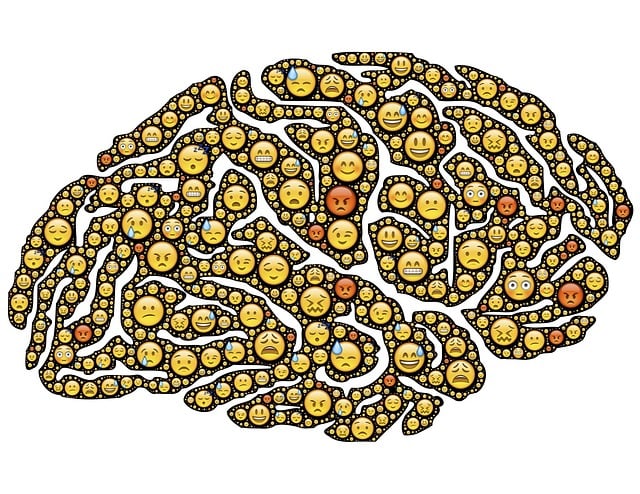Positive thinking exercises, such as compassion cultivation, CBT, mindfulness meditation, and gratitude practices, significantly enhance quality of life for individuals with Autism Spectrum Disorder (ASD). These interventions improve emotional regulation, reduce anxiety, promote social interactions, and encourage a growth mindset. Personalized exercises tailored to individual needs, cultural backgrounds, and preferences are crucial for effective Superior Autism Spectrum Disorder therapy. Regular goal setting and assessment ensure these practices remain beneficial, allowing therapists to adapt routines based on progress.
“Unleash the power of positive thinking for individuals on the Autism Spectrum! This comprehensive guide explores effective strategies to enhance quality of life through cognitive behavioral therapy and tailored exercises. We delve into the profound impact of positivity on ASD, offering insights into transforming challenges into strengths. Discover practical steps to integrate daily practices, ensuring a personalized approach. Learn how to measure success and adapt routines for optimal results in superior Autism Spectrum Disorder therapy.”
- Understanding Positive Thinking and its Impact on Autism Spectrum Disorder (ASD)
- The Role of Cognitive Behavioral Therapy in Promoting Positive Thinking
- Designing Personalized Positive Thinking Exercises for ASD Individuals
- Practical Strategies to Integrate Daily Positive Thinking Practices
- Measuring Success and Adjusting the Exercise Routine
Understanding Positive Thinking and its Impact on Autism Spectrum Disorder (ASD)

Positive thinking exercises play a pivotal role in enhancing the quality of life for individuals on the Autism Spectrum Disorder (ASD). ASD presents unique challenges, but cultivating a positive mindset can significantly improve their overall well-being. Research suggests that training in compassion cultivation practices and other positive psychology interventions can foster better emotional regulation, reduce anxiety, and promote social interactions.
By integrating these exercises into therapy sessions, superior autism spectrum disorder therapy becomes more effective. Crisis intervention guidance and social skills training benefit from this approach as it encourages individuals with ASD to view challenges as opportunities for growth. This shift in perspective empowers them to navigate social situations with increased confidence, leading to improved relationships and a more fulfilling life.
The Role of Cognitive Behavioral Therapy in Promoting Positive Thinking

Cognitive Behavioral Therapy (CBT), a superior approach for Autism Spectrum Disorder (ASD) therapy, plays a pivotal role in fostering positive thinking. This evidence-based practice focuses on identifying and changing negative or distorted thought patterns, thereby improving mood management and enhancing overall mental health awareness. By teaching individuals with ASD effective conflict resolution techniques, CBT empowers them to navigate challenging situations more constructively.
Through structured sessions, CBT helps clients challenge unhelpful thoughts and replace them with more realistic, positive ones. This process not only improves emotional well-being but also fosters resilience in the face of life’s challenges. By integrating conflict resolution techniques into daily life, individuals with ASD can better manage stress, improve social interactions, and develop healthier coping strategies—all essential components for leading a fulfilling life.
Designing Personalized Positive Thinking Exercises for ASD Individuals

Designing Personalized Positive Thinking Exercises for individuals with Autism Spectrum Disorder (ASD) requires a nuanced approach that caters to their unique needs and challenges. Superior Autism Spectrum Disorder therapy involves tailoring interventions to address specific symptoms and promote overall well-being. These exercises should aim to enhance self-esteem improvement by fostering a sense of accomplishment and encouraging positive self-talk, crucial aspects for ASD individuals navigating social interactions and personal growth.
Cultural sensitivity in mental healthcare practice is essential when creating these activities. Incorporating self-care practices that resonate with individual preferences and cultural backgrounds can significantly impact engagement and effectiveness. By understanding the specific challenges faced by ASD individuals, therapists can design exercises that not only promote positive thinking but also build resilience and improve daily functioning, ultimately enhancing their overall quality of life.
Practical Strategies to Integrate Daily Positive Thinking Practices

Integrating daily positive thinking practices can significantly enhance mental wellness for individuals with Superior Autism Spectrum Disorder (ASD). A practical strategy is to start each day with a mindfulness meditation session, focusing on breath and setting an intention for positivity. This simple act calms the mind, fostering a sense of center that can navigate any challenges ahead.
Incorporating gratitude into daily routines is another powerful tool. Encouraging individuals with ASD to keep a gratitude journal or simply share three positive things from their day, whether during therapy sessions or informal conversations, helps shift focus towards the abundant good in life. Resilience building through positive thinking isn’t just about individual efforts; it’s a collaborative process. Mental Wellness Coaching Programs Development tailored for ASD can provide structured support, teaching coping mechanisms and strategies to express emotions effectively, ultimately promoting a more positive mindset.
Measuring Success and Adjusting the Exercise Routine

Measuring success is a vital step in any therapy journey, especially when implementing positive thinking exercises for individuals with Superior Autism Spectrum Disorder (ASD). Therapists and caregivers should establish clear goals and regularly assess progress to ensure the exercise routine remains effective and beneficial. By tracking improvements in areas like emotional regulation, overall mood, and coping strategies, therapists can gauge whether the exercises are positively impacting the individual’s mental health awareness and crisis intervention abilities.
This process involves using various qualitative and quantitative measures such as observation, self-reporting, and structured assessments. Regular adjustments to the exercise routine based on these measurements are crucial for optimizing results. For instance, if an individual consistently demonstrates improved stress reduction methods following specific exercises, those activities can be prioritized. Conversely, if certain exercises prove ineffective or trigger adverse reactions, therapists should adapt and introduce alternative approaches, ensuring a personalized and responsive therapy experience tailored to the individual’s unique needs and preferences.
Implementing positive thinking exercises as part of a comprehensive therapy plan can significantly enhance the quality of life for individuals with Autism Spectrum Disorder (ASD). Cognitive Behavioral Therapy’s (CBT) role in promoting positive thinking is invaluable, offering personalized strategies tailored to each individual’s unique needs. By integrating these practices into daily routines, folks with ASD and their therapists can navigate challenges more effectively, fostering a sense of well-being and resilience. This approach, when measured and adjusted regularly, has the potential to revolutionize superior ASD therapy, unlocking new levels of functionality and happiness for those on the spectrum.











